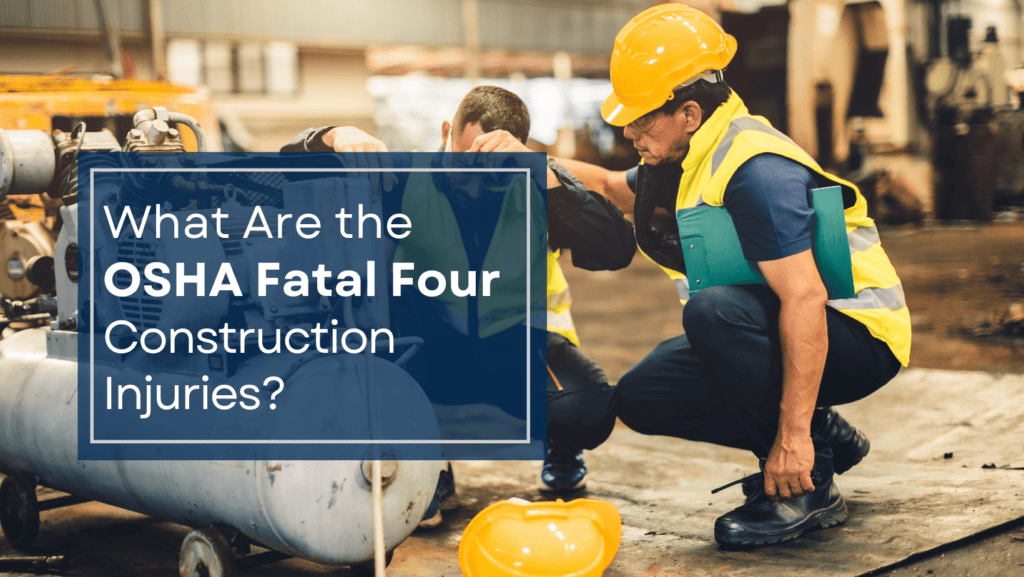According to the Occupational Safety and Health Administration, the Fatal Four construction injuries are the deadliest construction site injuries. Because of the high risk of serious injury, employers have a triple safety responsibility in this area. Employers must provide proper safety equipment, effectively instruct workers in its use, and stress the importance of this safety equipment.
The Fatal Four construction injuries are preventable, however, mostly for cost reasons, many employers don’t take necessary precautions. To them, employee safety is an unnecessary additional cost since they already have workers’ compensation insurance. Many people are less likely to buy security systems if their goods are fully insured.
Fatal Four survivors usually have several legal options under state law. An experienced job injury lawyer can effectively evaluated your case and sorts out these legal options. We realize that legal action is probably the last thing on a family’s mind in the wake of a fatal workplace accident. But many of these families may need the money to cover expenses and try to move on with their lives, and a skilled attorney knows how to obtain it.
Caídas
When buildings are under construction, their floors are usually covered with dirt and other debris. A wrong step could mean a serious slip-and-fall injury. A fall from a height is even more likely to be fatal. Most people don’t survive a fall from higher than four stories above ground level.
Internal hemorrhaging is often the official cause of death in these cases. Falls cause internal organs to grind against each other. The friction usually causes severe bleeding since internal organs don’t have protective skin layers. Such internal bleeding is hard to detect and locate, especially for emergency responders who don’t have sophisticated diagnostic equipment. It’s also hard to stop at a hospital.
Construction companies could prevent most or all fatal falls if they stressed PPE (personal protective equipment) use, like a safety harness, perimeter protection, and gap sealing, as well as ladder and scaffolding safety.
These prevention points introduce the two basic legal options most survivors have in these situations: the scaffolding law, which is unique to New York, and workers’ compensation, a system that’s available in most states.
Electrocution
These injuries sometimes overlap with falls. When a person touches a live electrical wire, the power surge arc blast usually throws the victim through the air. If the victim was far above ground at the time, a deadly fall is almost inevitable.
Other times, an electrical surge triggers involuntary muscle contractions in the hand (the no-let-go response). If that happens, the victim touches a wire that’s hotter than the surface temperature of the sun for at least one or two seconds.
Those few brief moments are more than sufficient to cause third or fourth-degree burns. Such wounds require extensive, and expensive, treatment at regional burn centers. Additionally, the average burn injury-related hospital stay is much longer than the average injury-related hospital stay. As a result, medical costs skyrocket.
If electrocution occurs on a scaffold, an injury lawyer may file an injury claim in civil court. Usually, employers are strictly liable for injuries related to unsafe scaffolding. Compensation in these matters usually includes money for economic losses, such as medical bills, and noneconomic losses, such as pain and suffering.
A failure to account for overhead power lines causes many electrocution injuries, followed by using power tools that aren’t double grounded.
Struck By
Falling objects often cause lesiones graves at construction sites. If Tim drops a wrench on his foot, he might break his toe. If Tim drops a wrench from fifty stories above ground, the victim will sustain a much more severe injury.
Hard hats prevent some, but not all, head injuries. Distributing such equipment and posting a “hard hat required” sign isn’t enough. Employers must also enforce the rule and tell workers why the rule is important.
TBIs (Traumatic Brain Injuries) kill about 50,000 Americans every year. These injuries are permanent and degenerative. Dead brain cells don’t regenerate.
Worker carelessness, as opposed to unsafe conditions, usually causes “struck by” injuries. In some states, if a negligent co-worker causes an injury, a civil claim may be available. But in New York, workers’ compensation is usually the exclusive remedy in such cases.
Caught Between
This final category usually includes motor vehicle collisions and excavation trench injuries. Many victims are caught between a large motor vehicle and a fixed object, like a retaining wall. Unreinforced construction trenches are prone to collapse, and the victim is caught between the falling rubble.
Once again, workers’ compensation usually covers caught between injuries. These no-fault benefits replace lost wages and pay medical bills. However, insurance companies don’t hand out these benefits easily. Lawmakers have steadily reduced workers’ compensation insurance premiums over the years. Since there’s less money in the system, attorneys must work hard to obtain a fair-sized piece of a shrinking financial pie.
The compensation available in a job injury claim eases the pain of a construction worker’s sudden death. For a free consultation with an experienced job injury lawyer, póngase en contacto con Napoli Shkolnik.
